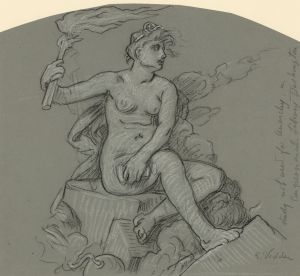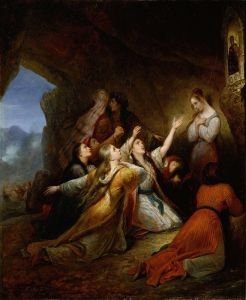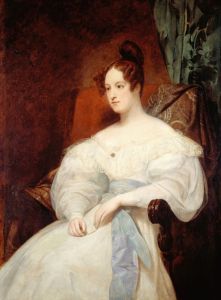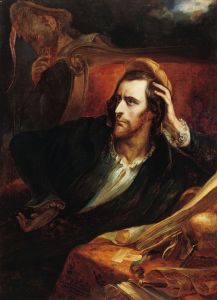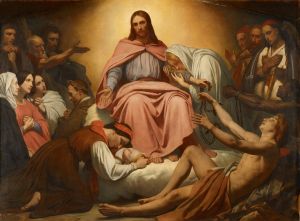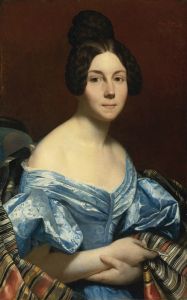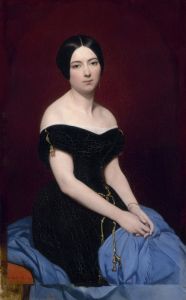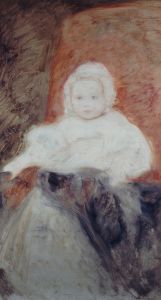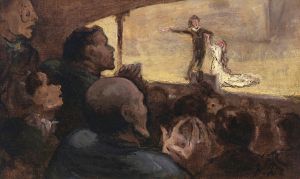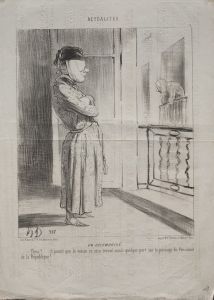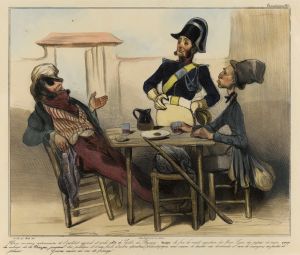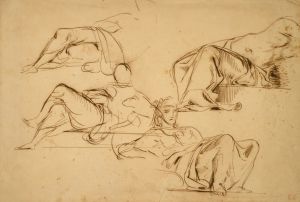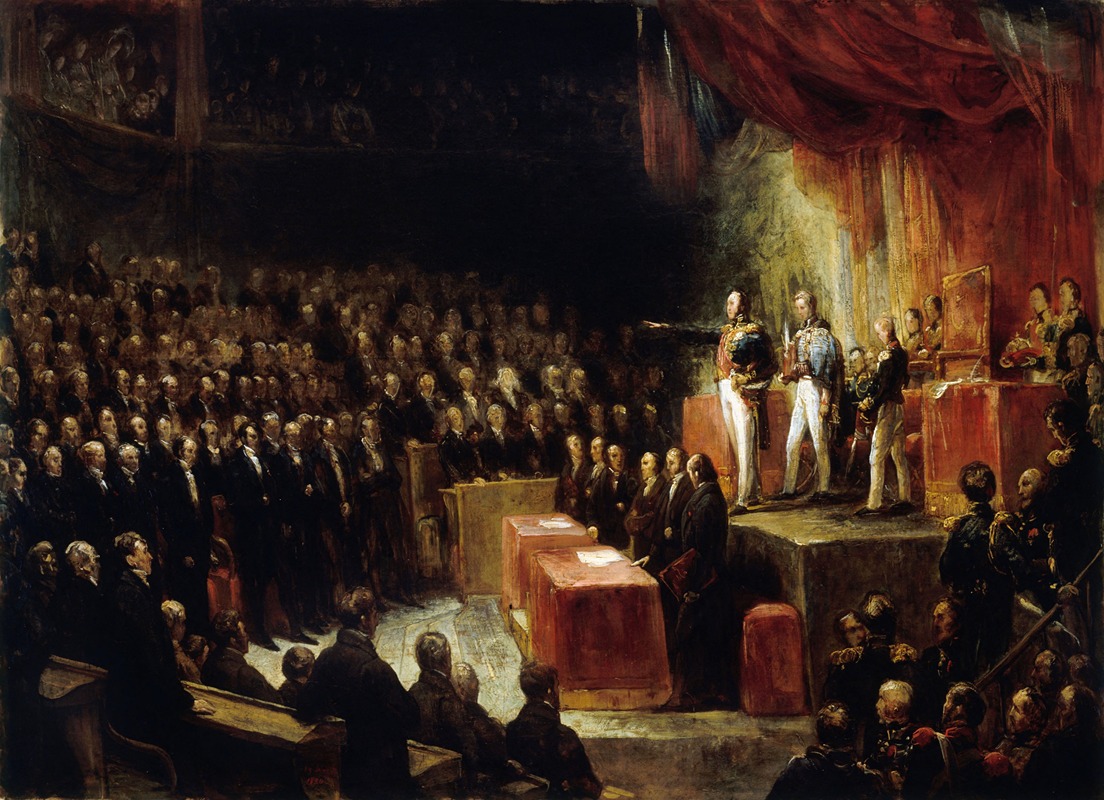
Louis-Philippe Swearing In Before The Chambers, August 9, 1830
A hand-painted replica of Ary Scheffer’s masterpiece Louis-Philippe Swearing In Before The Chambers, August 9, 1830, meticulously crafted by professional artists to capture the true essence of the original. Each piece is created with museum-quality canvas and rare mineral pigments, carefully painted by experienced artists with delicate brushstrokes and rich, layered colors to perfectly recreate the texture of the original artwork. Unlike machine-printed reproductions, this hand-painted version brings the painting to life, infused with the artist’s emotions and skill in every stroke. Whether for personal collection or home decoration, it instantly elevates the artistic atmosphere of any space.
Louis-Philippe Swearing In Before The Chambers, August 9, 1830 is a painting by Ary Scheffer, a prominent 19th-century French Romantic painter. The artwork depicts a significant historical moment during the July Revolution of 1830 in France, when Louis-Philippe, Duke of Orléans, was sworn in as King of the French. This event marked the beginning of the July Monarchy, a constitutional monarchy that replaced the Bourbon Restoration.
The painting captures Louis-Philippe taking the oath before the French Chambers, symbolizing his acceptance of the constitutional charter and his role as a "citizen-king." This moment was pivotal in French history, as it represented a shift from the absolutist rule of the Bourbon dynasty to a more liberal and constitutional form of governance. Louis-Philippe's reign was characterized by his attempts to balance the interests of the bourgeoisie, who had supported his rise to power, with the demands of a broader population seeking political and social reforms.
Ary Scheffer, known for his Romantic style and historical subjects, was an artist closely associated with the Orléans family. His work often reflected the political and cultural currents of his time. In this painting, Scheffer employs a realistic and solemn approach to emphasize the gravity of the occasion. The composition likely includes key figures from the French government and political elite, though specific details about the individuals depicted are not widely documented.
The painting serves as both a historical record and a piece of political propaganda, reinforcing the legitimacy of Louis-Philippe's rule. It reflects the ideals of the July Monarchy, which sought to present itself as a moderate and stabilizing force in the aftermath of revolutionary upheaval. The artwork is an example of how art was used to commemorate and legitimize political events during the 19th century.
While the exact location of the painting today is not specified in most sources, Ary Scheffer's works are often associated with major French collections, including the Louvre and the Musée de la Vie Romantique in Paris. The painting remains a significant representation of the intersection between art and politics during a transformative period in French history.





